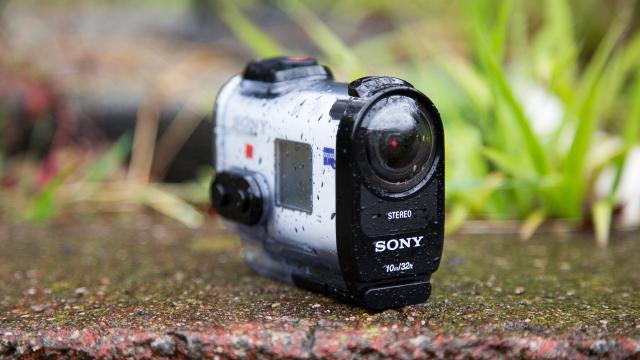It’s been a hard fight for Sony (and everyone else) who is trying to get a slice of that action camera pie GoPro is so effectively hogging. Sony has had some solid cams that offered best-in-class audio, but they have always fallen just a bit short beating GoPro on image quality and ease of use. Sony brought me out to Colorado to get some hands-on time with the company’s forthcoming flagship, the 4K Action Cam X1000V. From what I’ve seen so far, it’s very impressive.
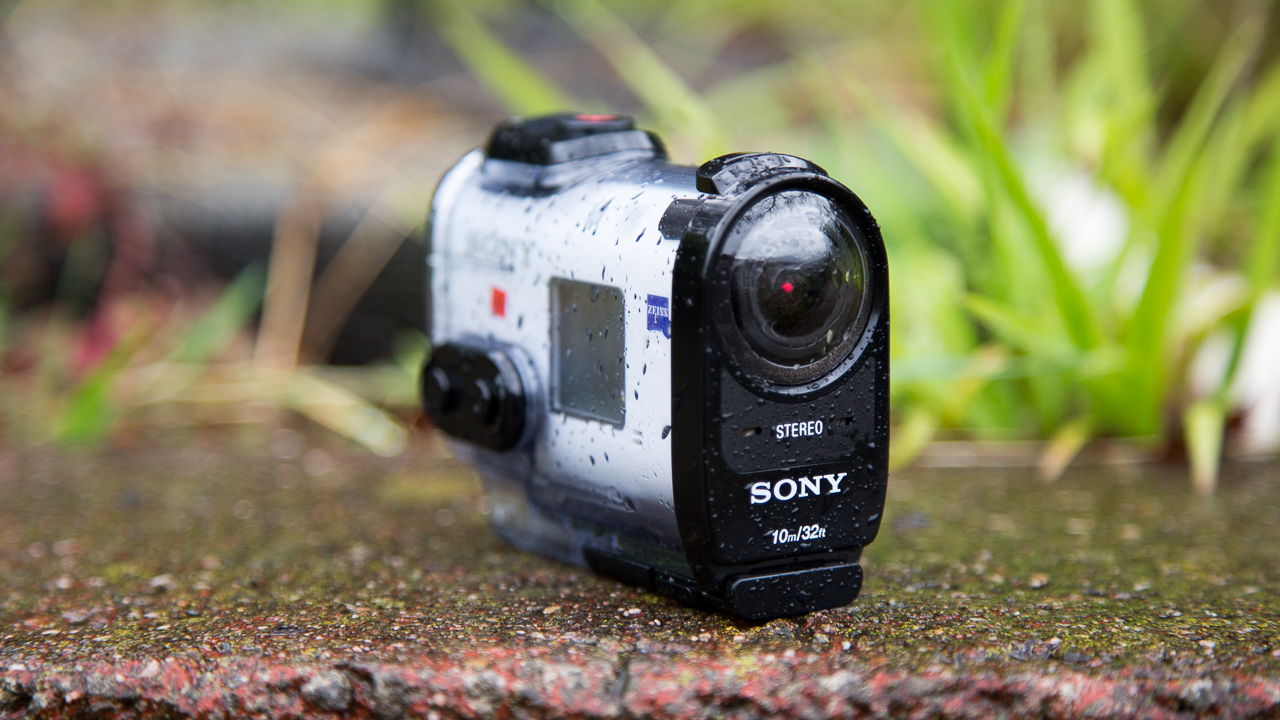
The X1000V looks just like Sony’s previous Action Cams, like the AS100V. I mean it’s essentially identical. It’s sort of a tall, oblong, bullet shape. Definitely more streamlined than GoPro’s lineup, though it’s definitely a larger device. It also offers some features that the GoPro doesn’t have, such as built-in GPS and digital image stabilisation, as well as NFC for (theoretically) easy pairing with your phone. The included waterproof case has been upgraded to 10 metres, up from the woefully insufficient 4.5m on previous models, but it’s still far behind the 40 metres for GoPro’s included case.
But how about the image quality? While this first test footage is by no means comprehensive (i.e. I only shot in snow, and in a few different modes), it gives us a good early indication of what the camera can do. The clips in the video above were shot in 4K at 30 frames per second, 1080p at 120fps, and 720p at 240fps.
These are the same banner modes the GoPro’s Hero4 Black has, now that its new firmware has rolled out, though it’s worth noting that the Hero has a wider range of shooting modes to choose from, including 2.7K, some 4:3 ratio modes, and SuperView, which squeezes more into the top and bottom of the frame.

After shooting, I had the opportunity to plug the X1000V directly into a 55-inch 4K TV to check out my footage and, man, it looked pretty incredible. There is just this tremendous amount of detail that comes through, and the images are sharp and clean. My biggest complaint is that lens distortion is still a problem. Trees at the side of the frame looked like they’re bowed. Also, by default, the camera shoots in “Vivid” colour mode which really ramps up the saturation. It’s a matter of personal preference (and toggle-able) but I found it a bit much. The sky looked too cartoony and unrealistic and my face looked like it had a serious sun burn (I didn’t). Nit-picking aside though (and this is just nit-picking), the video really looks beautiful.
I was also very impressed with the 1080p at 120fps mode, which is generally more useful for everyone who doesn’t have a 4K display (which is the vast majority of people) . When you slow it down to 30fps, you get some very smooth 25-per cent slow-motion (which is what you see in the video above). This is probably my current favourite mode for action cameras — just because it’s so flexible — and it looks like Sony had done a great job with it.
We don’t have 1:1 comparison shots with the Hero4 Black yet, but we will soon.
The mode where Sony very clearly comes out on top is 720p at 240fps shooting. Despite the lower resolution, the Sony cam still preserve a hell of a lot of detail. And when you slow it down by a factor of 8 (to 12.5-per cent speed) it looks super smooth. But the big differentiating factor is that Sony’s 240fps mode uses its wide field of view. GoPro can only shoot at that speed in the narrow field of view which is generally fine when you’re shooting someone else, but if I’m shooting back at myself, I just can’t get enough of myself in the frame. You can see an example of GoPro’s close crop in the video above. Sony’s version is just much more versatile and useable, and it seems like the detail may be better, too.
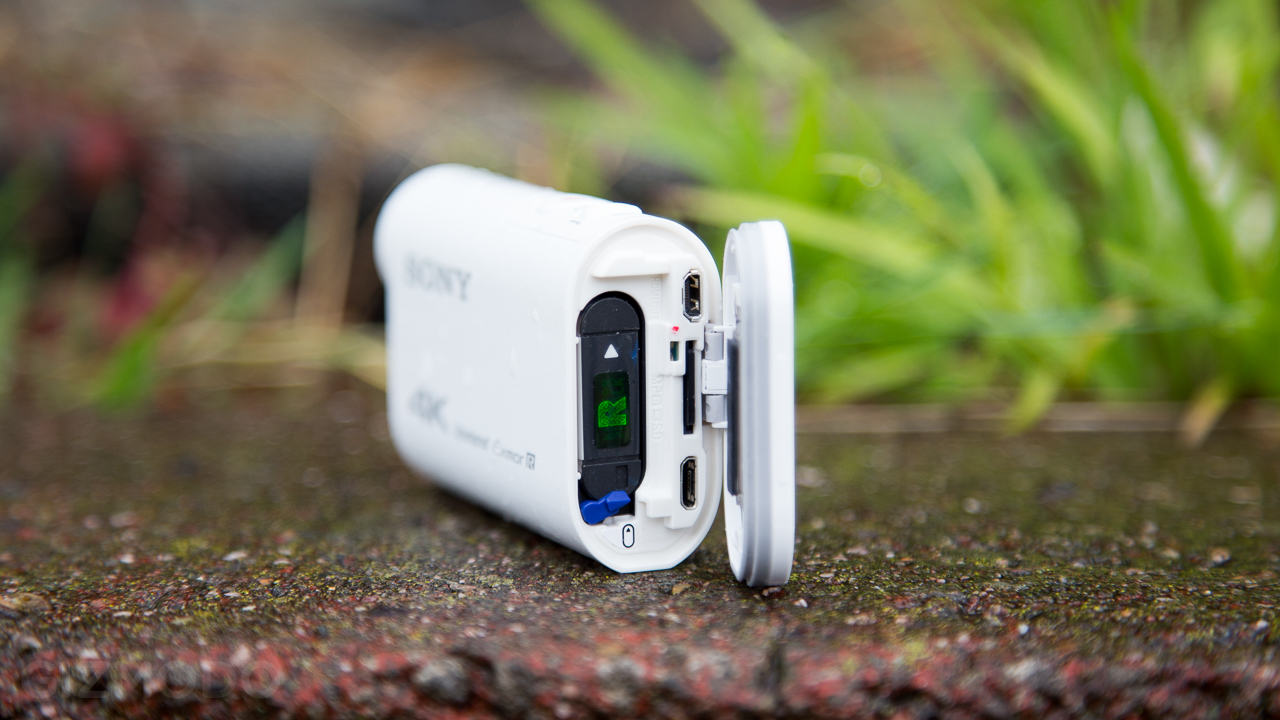
Part of the reason this high-level of detail is possible is that the X1000V uses a codec that shoots at bit-rates up to 100Mbps. Sony’s last version topped out at 50Mbps and the Hero4 Black can only go to 60Mbps, so for context: That’s a lot. The caveat is that bit-rates are the video equivalent of megapixels for still cameras; it doesn’t tell all of the story, but it’s still important.
That improvement has a price. In order to shoot in those high bit-rate modes you have to use a new, cutting-edge micro SD card. I used a Sony-branded micro SDXC UHS-I memory card (Class 10, U3) that is rated at 95Mbps. They will run you about $US50 for a 64GB card, which isn’t too bad, but it’s going to be a lot harder to find them in stores when you need an extra card or two in the go.
Sony makes much of its built-in stabilisation prowess, but we’re just a tad sceptical on this front. Its previous Action Cams have offered the same and the results have never been too impressive. For starters it’s digital image stabilisation, not optical, which essentially means that it’s cropping the image a bit, which tends to reduce the quality. Also stabilisation isn’t available for the banner modes, like 4K@30, 1080p@120, or 720P@240; none of the clips you see in the video at the top are stabilised, because they couldn’t be. Also, we found in testing those earlier models that it didn’t really make all that big of a difference. But maybe it’s better this year! We’ll definitely be evaluating that once we dig into our review.
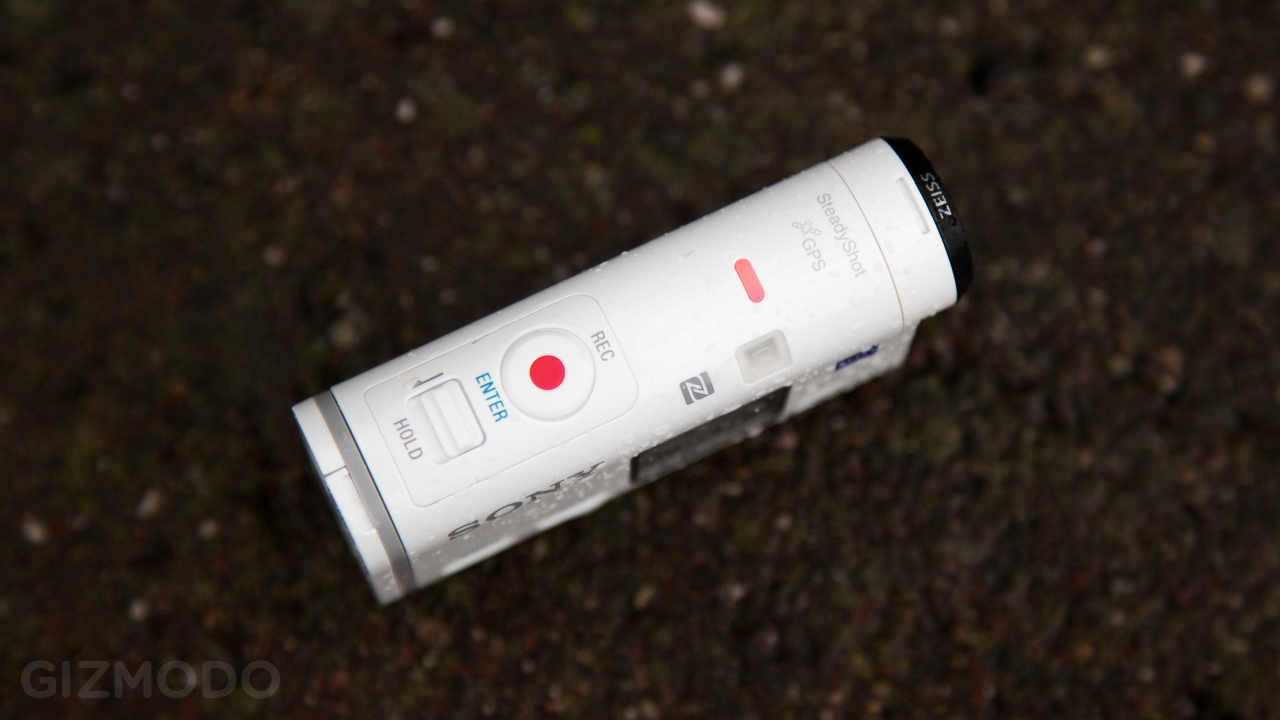
And while the performance is — for the the most part — on par with the GoPro competition, there are still serious downsides. The menu system on this camera is infuriatingly frustrating to use. Changing video modes and then frame rate, for example, takes a minimum of 17 clicks on the X1000V. I was able to accomplish the same task on the Hero4 with just six, and it’s far more intuitive. Because of the camera’s LED placement there is still absolutely no way to tell whether the camera is rolling or not when it’s pointed at you, which, come on guys! Also, the lens cover on the waterproof case is round and plastic (versus flat and glass on the GoPro) which I found attracts water droplets much more. I also had a lot of issues using the new Sony Play Memories app on my Android phone, but it was a pre-release version, so we’ll hold out hopes that they get it worked out by launch.
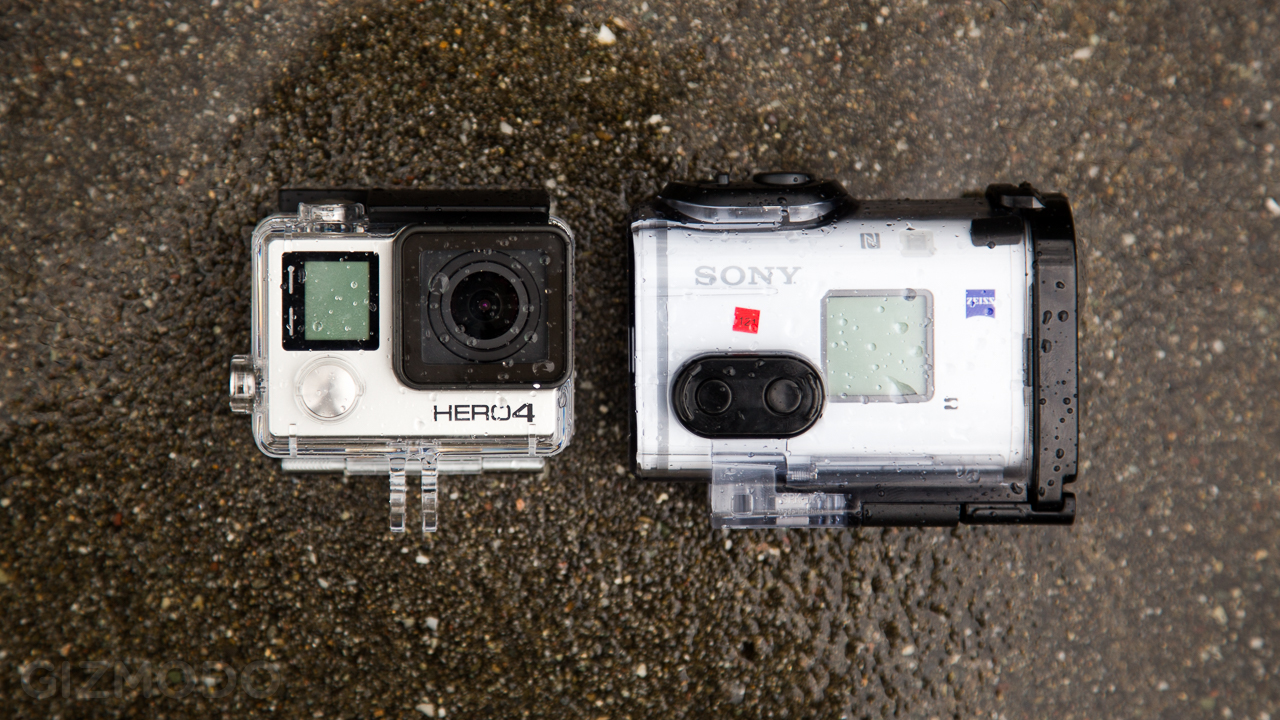
The 4K Action Cam X1000V costs $US500 and is currently slated to ship the first week of March, 2015. If you want to add the LiveView Remote — Sony’s water-proof, wristable, Wi-Fi remote control with a colour screen for framing and viewing footage — it will be an extra $US100. This is just a a preview, not a review, so we’ve got a lot more testing to do before we can make a final judgment call, but things look very good so far. If you’ve been thinking about buying a high-end action cam, it’s probably worth waiting another couple weeks until we’ve had a chance to really put this thing through its paces.
